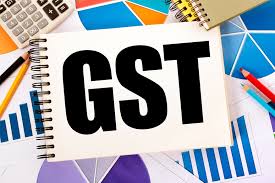Definitely going to happen': CEA on GST rate structure rationalisation
Chief Economic Adviser (CEA) K V Subramanian on Thursday said that rationalisation of GST rate structure is on the government's agenda and it is definitely going to happen.
Further, he said that a three-rate structure is very important and there is also a need to fix inverted duty structure as far as the GST is concerned.
The Goods and Services Tax (GST), which amalgamates more than a dozen central and state levies like excise duty, service tax and VAT, was introduced in July 2017. GST currently has five rate structures -- 0.25 per cent, 5 per cent, 12 per cent, 18 per cent and 28 per cent.
To a question if rate structure rationalisation under GST needed, Subramanian said, "I think that's something definitely going to happen. The original plan was to have a three-rate structure. But I think what we have to be very cognizant about is that oftentimes with policymaking you don't want perfect to actually become the enemy of the excellent."
A majority of common use items have been exempted from GST, while 28 per cent tax is levied on luxury, demerit and 'sin goods'.
"The GST, the way it got created with actually five rates was basically excellent because now we are seeing the impact on GST's amounts that are coming in...the policymakers then must be given credit for actually being practical enough to say, let's get it going first," he said at a virtual event organised by industry body Assocham.
"The three-rate structure is something... definitely important and even the inverted duty structure (is) also equally important to actually fix. I think the government is definitely seized of the matter. So we should hopefully see traction on that soon," he said.
GST collection slipped below Rs 1 lakh crore in June for the first time in eight months as the second wave of the Covid pandemic and the resultant lockdowns hit businesses and the economy.
At Rs 92,849 crore, GST collection was the lowest in 10 months since August 2020, when it was Rs 86,449 crore. The GST collections in June 2021 are primarily for supplies made in May -- a month when most states were under different levels of lockdown, reducing business activity.
Highlighting the importance of the financial sector in the growth of the economy, Subramanian said India needs more global size banks.
India is the fifth largest economy of the world but the banking system is still has a lot of catching up to do, he said adding that domestically some could be large but not large enough to be included in global top 50 list.
State Bank of India (SBI) at the 55th position is the only bank in the global top 100 list. China has 18 banks while the US has 12 in the list.
Speaking on the occasion, Sebi's Whole Time Member G Mahalingam said developing a credit default swap (CDS) market could help in deepening corporate debt market.
"We have been trying our level best, but there have been a lot of constraining features as far as CDS is concerned. This is one area where we need to work which will be completely and completely sector agnostic," he said.
Mahalingam suggested the infrastructure sector deserves at least some kind of a partial credit enhancement kind of facilities and there is a need to have a look at this.
"I would still repeat a CDS is something which we need to really work through all the policymakers, putting their heads together to deepen the corporate bond market," he said.
He also said there are regulatory restrictions on insurance and pension funds for investment in corporate bonds and there is to examine the issue.
Source:https://www.business-standard.com/article/economy-policy/gst-rate-structure-rationalisation-on-govt-s-agenda-says-cea-subramanian-121072900854_1.html
Download our App to get knowledge updates::: https://play.google.com/store/apps/details?id=com.app.gstmitra
Join Our Telegram Channel for more updates:https://t.me/praveengst



Comments
Post a Comment